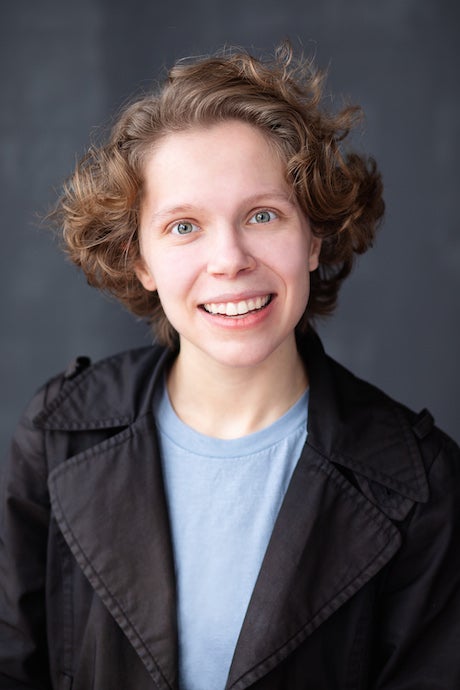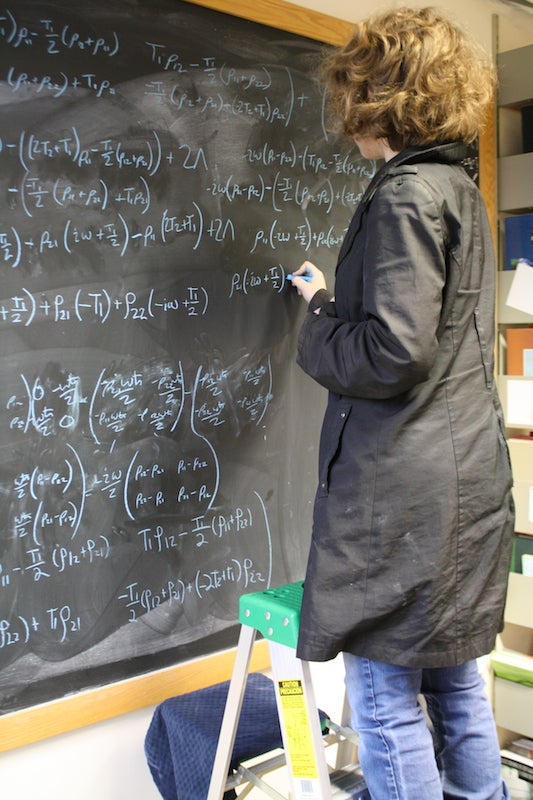Undergraduate Research
Claire Segura '20
OUR Featured Researcher: Claire Segura '20

Claire Segura (she/her) was a STRONG Scholar and is a Physics and Mathematics major conducting mentored research under Professor Jason Stalnaker. Her project is titled "Excess Power Axion Star Search for GNOME".
Please describe your research:
The Global Network of Optical Magnetometers for Exotic physics is an international collaboration using optical magnetometers (which measure very small magnetic fields) that have been shielded against actual magnetic fields to search for “pseudo-magnetic” interactions that could be from dark matter. I work on writing a program that will sift through these magnetic field data from every station to look for bursts hidden in the noise that happened at the same time in multiple detectors around the world.
Why is your research important?
For many years, physicists have been aware that about 85% of the matter in the universe consists of dark matter: we know roughly how much dark matter there is and how it is distributed through space by observing its gravitational effects, but almost everything else about it is still a mystery. Our knowledge is limited by the fact that dark matter does not interact with light, so very few of the usual methods of gathering information about the universe can be used to study dark matter directly. Cracking the secret of dark matter would be an incredible step forwards for modern physics, and GNOME has the potential to rule out many yet untested theoretical models.
What does the process of doing your research look like?
My project right now is mostly coding with python in jupyter notebook. When I’m not writing code, I’m trying to figure out what code I should be writing by reading papers and textbooks about signal processing and other data analysis techniques. I also spend a lot of time discussing problems with Professor Stalnaker and the other members of GNOME during the weekly Skype meetings. There are two GNOME meetings every week, one for the full collaboration and one for just the North American groups working on related data analysis, where I usually get to say a few words updating our collaborators on what has been going on at Oberlin, and describing any problems that they might be able to help with.
What knowledge has your research contributed to your field?
I’m still working on the program, and I’ve mostly used simulated data. The next stage should be running it on the actual magnetometer data with fake injected signals to see if it can pick them out correctly.
In what ways have you showcased your research?
I helped present 2 posters (one on data analysis and one on the magnetometer setup) with two other Oberlin students and our collaborators at the 2019 APS Division of Atomic Molecular and Optical Physics (DAMOP) conference in Milwaukee Wisconsin. I presented an updated magnetometer poster at the end of the summer at the 2019 Workshop for Optically Pumped Magnetometers (WOPM) at the Helmholtz Institute in Mainz, Germany, and gave a 30 minute talk at the GNOME specific meeting which occurred right after WOPM, also at the Helmholtz Institute.
How did you get involved in research? What drove you to want to seek out research
experiences in college?
I got involved with research as part of the Science and Technology Research Opportunities for a New Generation (STRONG) program at Oberlin, and have been working with the same research group ever since.
What is your favorite aspect of the research process?
I really love the idea of working on a project that could help solve an important mystery of modern physics. When this project is complete, we will cross out a new swath of the possible parameter space. Engaging with the work on a day to day basis, I am enjoy the task pushing myself to understand the mathematical heart of the analysis and probing it for flaws.
How has working with your mentor impacted the development of your research project? How has it impacted you as a researcher?
I started working with Professor Stalnaker during the summer before my freshman year as part of STRONG. This was my first experience with physics research and it has had an extremely profound impact on my later career. I started to get an idea of what kind of research I enjoyed doing, and started getting experience with important experimental tools. This experience helped me find other summer research experiences outside of Oberlin, as well as progress to play a larger, more independent role in the Oberlin project.
What advice would you give to a younger student wanting to get involved in research in
your field?
Try to get involved as early as you can! It typically takes some time for a student joining a new lab to reach the point where they can start making significant progress their own, so don’t be discouraged if you aren’t able to do a lot at first. Once you start working on a new project, keep in mind that like many other difficult skills, research is more rewarding once you get past the basics, so try to stick with a project for a few weeks before you decide whether or not it’s the right place for you. Make sure to watch the professor and any other students carefully, and always ask questions about what they are doing and why, so that you are ready when the time comes to try it yourself.
Read about more of OUR featured researchers
